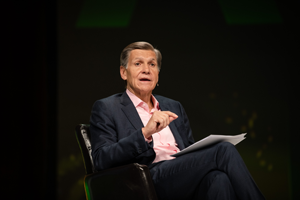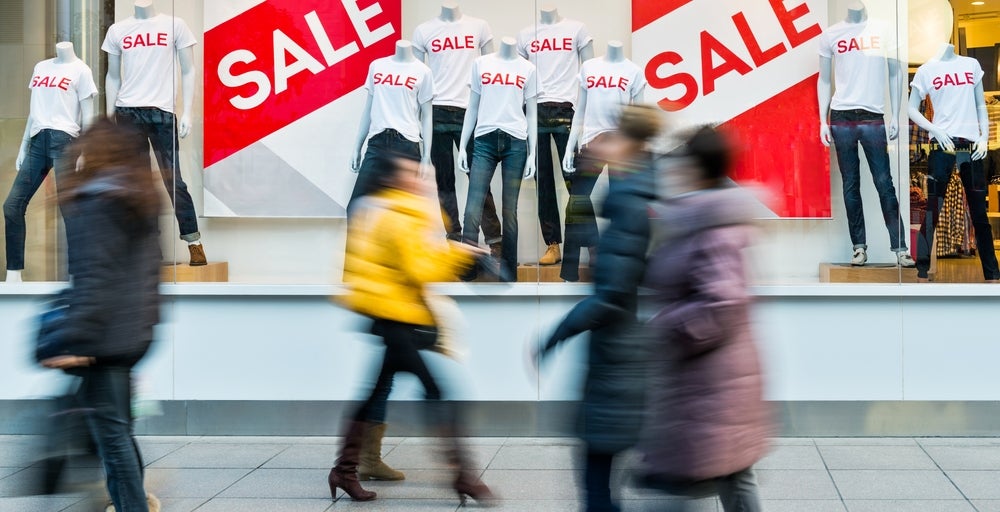Voices are growing louder for the marketing industry to take stronger roles and action to address difficult and entrenched society and sustainability issues like ocean plastic, the clean water crisis and the stubborn inequality between men and women on a number of fronts.

One of the most outspoken on the issue is Marc Pritchard, chief brand officer at P&G.
“It starts with the fact that people expect a lot more from our brands,” he said. “They expect us to have a point of view on society and sustainability issues. It’s not optional.”
Research has shown that nine out of 10 people have a more positive image of a company if that company takes a stand on important issues. Fifty-percent reported making purchase decisions based on shared beliefs with brands. Brands that take on social or sustainability causes and can prove that dedication to consumers are rewarded with long-term loyalty.
“Taking a cause is good for growth. If we were to achieve sustainable development goals it would add $12 trillion to the economy,” he said last week at the ANA Masters of Marketing Week. “We need to use our voices in advertising, media, content and marketing to drive sustainable behaviors and lifestyles. Choose a sustainability challenge for your business. There’s many to go around.”
As examples, American Express is developing a non-plastic credit card. Disney has eliminated straws and stirrers in its parks. P&G has taken recycled beach plastic and turned it into bottles.
Other articles you might enjoy:
- P&G Host #SheIsEqual Summit
- Strong Progress in CMO Gender Balance, Steeep Shortfall in Ethnic Diversity
Moving to the topic of the great equality divide between men and women, he said, “The World Economic Forum says that if we were to get economic economy between women and men it would add $28 trillion to the world’s economy and if we were to achieve economic equality in race in the United States it would add $2 trillion. So that’s market growth and market growth is something we need to make happen.”
“We want to use our collective reach and voice in advertising media and all communications to eliminate bias and promote equality and inclusiveness in gender, race, LGBTQ, people with disabilities and every culture,” he said. “There should be equality and representation in pay and respect, but the problem is it isn’t equal.”
In the marketing industry 32 percent of CMOs are women, 33 percent of chief creative officers are women, and only 10 percent of commercials and content are directed by women. Six percent of employees are black versus 14 percent of the overall population, eight percent are Latino vs. 16 percent and 10 percent are Asian vs. 12 percent. At agencies, four percent are black, five percent Latino and 10 percent Asian. When it comes to racial equality there are chronic gaps in health, education and economic participation and persistent underrepresentation.
“Equality is limited by bias,” he said. “The images and portrayals that we have in our advertising and media affect perception. They embed memories that in turn form bias, which is a very real human condition.”
ANA studied 40,000 ads and found that 29 percent of women are inaccurately portrayed through some form of stereotyping, objectification or diminished character. The same study showed that when you get gender equal advertising, those ads perform better with 10 percent higher ratings in trust and 26 percent higher sales growth.
“We can use our reach and our voice in advertising to address bias, eliminate stereotypes, promote positive conversation, influence attitudes and change behavior, “ he said. “So let’s join forces and be a powerful force for good and a force for growth to increase trust ratings and sales growth.”
Pritchard suggested the following ways for marketers to get involved:
1. Join #SeeHer Seventy-five companies so far have joined the movement to increase the accurate portrayal of women and girls in all forms of communication.
2. GEM Score (Gender Equality Measure) takes the “equality” temperature of advertising and marketing. Scores that top 100 have a better chance of driving trust and sales growth.
3. Join the UN Women on Stereotype Alliance working to eradicate harmful stereotypes.
4. Join ANA’s AIMM (Alliance for Inclusive and Multicultural Marketing), which is developing a related GEM score.
5. Free to Fit guarantees women directors the equal opportunity to bid on commercial jobs in the advertising community.
“Insist on equality in your marketing teams, your agencies and behind the campaign,” Pritchard says. “When you do this it will guarantee inspirational brilliant work.”
An example of that work is P&G’s “Thank You Mom, Olympics” video, which was premiered by Ellen Degeneres.
“The back story is that there were 50 percent men, 50 percent women on this campaign, Latino, Asian, Mexican, black—it was a completely diverse group and the director was a woman. That’s the kind of work you can get. When you get equality, it leads to trust and leads to 100 percent accurate portrayals, which leads to increased trust, which leads to increased sales.”



